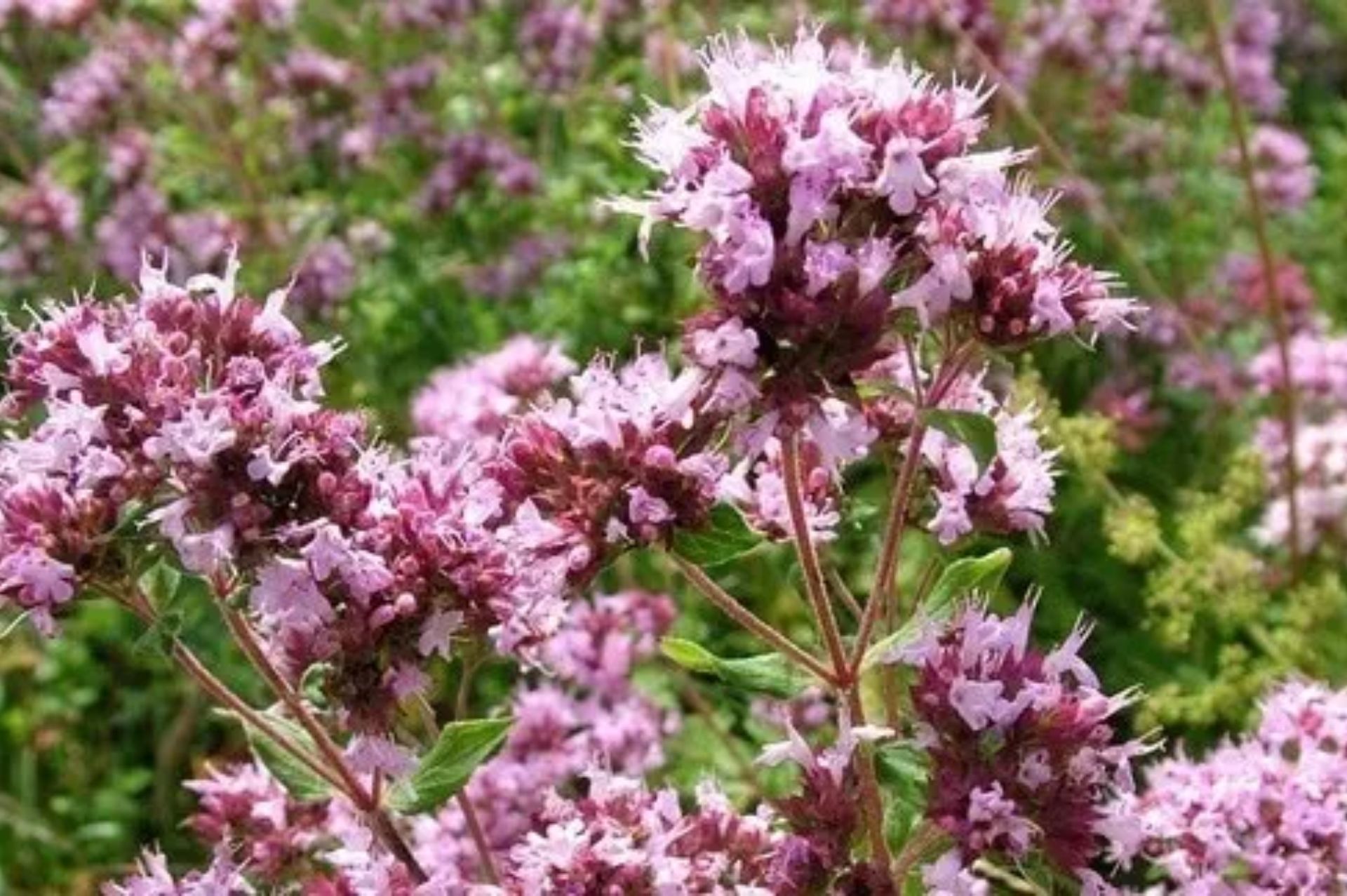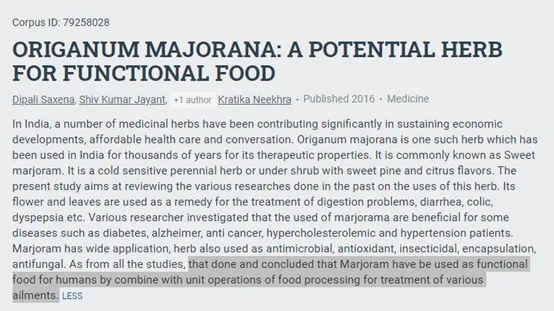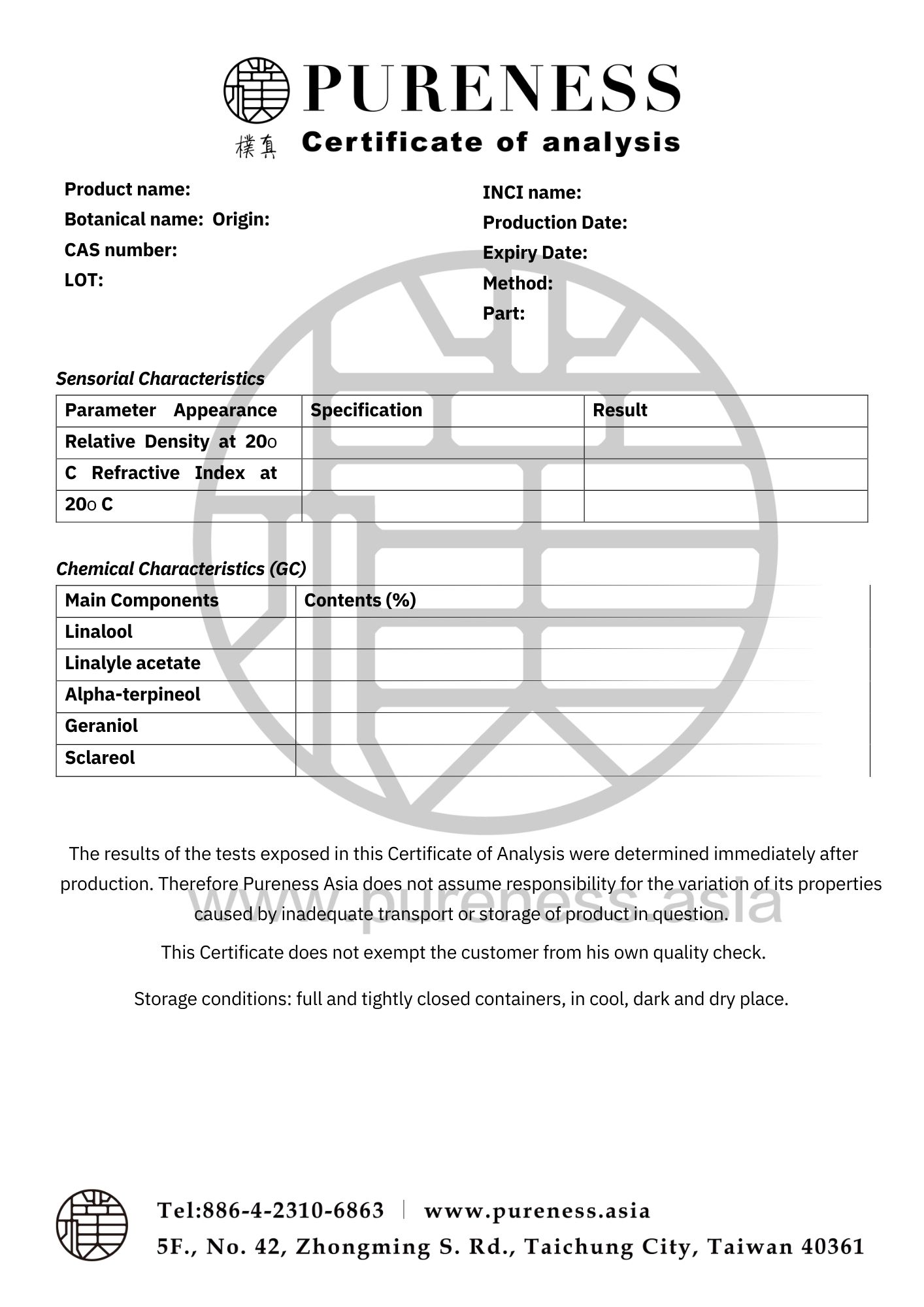
Marjoram
Scientific name|Origanum majorana
Origin|Egypt
Classification|Herb series
Specifications|500g-25kg Please contact sales for details
Extraction part|Whole plant
Extraction method | Distillation
Plant family|Lamiaceae
Aroma|Warm herbal scent
▎Essential Oil Introduction
Sweet marjoram grows to about 30-80 cm and is a perennial herbaceous plant with a dense, shallow-root system. The genus name Origanum comes from the Greek word meaning "joy of the mountain." In ancient Greek and Roman times, it was considered a symbol of happiness and was regarded as a divine herb. It is commonly used in everyday dishes, with a classic Italian preparation involving sweet marjoram, olive oil, and roasted potatoes. It is often confused with wild marjoram (commonly known as oregano, phenol-rich), but the sweet marjoram's flavor is sweet with a spicy bitterness, hence the name "sweet marjoram" to distinguish the two. In Mediterranean essential oil blends, it is one of the most common oils used in sleep formulas.
The flower language of sweet marjoram is "communication." According to Greek mythology, sweet marjoram was a beloved herb of Aphrodite, the goddess of love and beauty. It is said that the herb gained its fragrance through her touch. In Roman mythology, sweet marjoram was associated with Venus, the goddess of love, and symbolized "honor, love, and fertility." It was believed to bring good luck to newlyweds, and in traditional Greek and Roman weddings, sweet marjoram was woven into crowns worn by the bride and groom, blessing them with happiness and longevity.
▎Component Analysis
|Main component: Monoterpenols
The main components are terpinen-4-ol, thujopsene, α-terpineol, and agarol, along with other compounds such as terpinene, sabinene, p-cymene, eugenol, terpinyl acetate, agar acetate, and anethole.
|Research Validation

▸ The book The Herball describes sweet marjoram essential oil as a "beneficial remedy for the mind."

▸ Research indicates that sweet marjoram essential oil has antibacterial properties against various microorganisms, including Staphylococcus, soft rot bacteria, and species of Mora.
|Raw Material Certifications
To obtain relevant certification information, please contact us on WhatsApp.
▎References
- Sana Alibi et al, Anti-oxidant, antibacterial, anti-biofilm, and anti-quorum sensing activities of four essential oils against multidrug-resistant bacterial clinical isolates, Current Research in Translational Medicine. Volume 68, Issue 2, April 2020,Pages 59-66
- C.Busattaa, R.S.Vidala et al, Application of Origanum majorana L. essential oil as an antimicrobial agent in sausage.Food MicrobiologyVolume 25, Issue 1, February 2008, Pages 207-211.
- K. H.C. Baser,N. Kirimer &G. Tümen, Composition of the Essential Oil of Origanum majorana L. from Turkey .Pages 577-579 | Received 01 Nov 1992, Published online: 28 Nov 2011.
- E. Simándia, Essential oil composition and antimicrobial activity of Origanum majorana L. extracts obtained with ethyl alcohol and supercritical carbon dioxide.Food Research International Volume 38,Issue 1, January 2005, Pages 51-57.
- R.R. Vera*, J. Chane-Ming, Chemical composition of the essential oil of marjoram (Origanum majorana L.) from Reunion Island.Food Chemistry 66 (1999)143±145.
- Ibtissem HamrouniSellamia et al, Effect of growth stage on the content and composition of the essential oil and phenolic fraction of sweet marjoram (Origanum majorana L.) Industrial Crops and Products Volume 30, Issue 3, November 2009, Pages 395-402.
- Ibrahim M. El-Ashmawy et al, ProtectiveEffect of Volatile Oil, Alcoholic and Aqueous Extracts of Origanum majorana on Lead Acetate Toxicity in Mice. Basic & Clinical Pharmacology & Toxicology Volume 97, Issue 4.
- Dayal B and purohit RM.chemical examination of the essential oil from the Seeds of majorana hortensis moench, the flavor industry, 1971;2:477-80.
- Price, Shirley, and Price, Len (2012). Aromatherapy for health professions, 4th Ed. New York, New York: Churchill Livingstone Elsevier.
- Deans SG and Svoboda KP. The anti microbial properties of marjoram (Origanum majorana L.) volatile oil. Journal of Flavour and Fragrance 1990; 5(3):187-90.
|Some images sourced from the internet. Contact for copyright removal|





